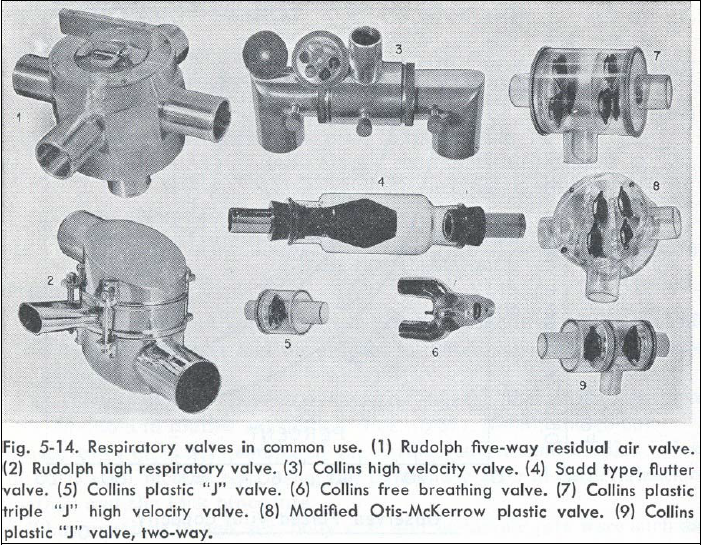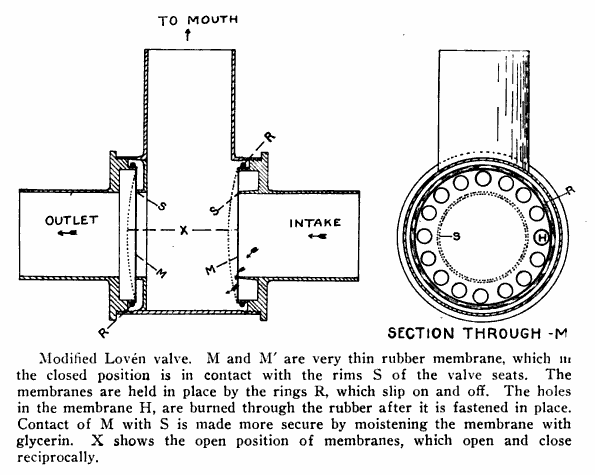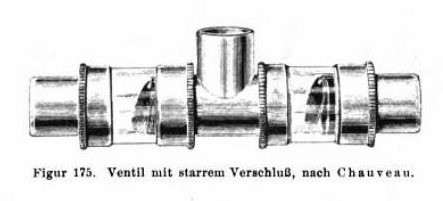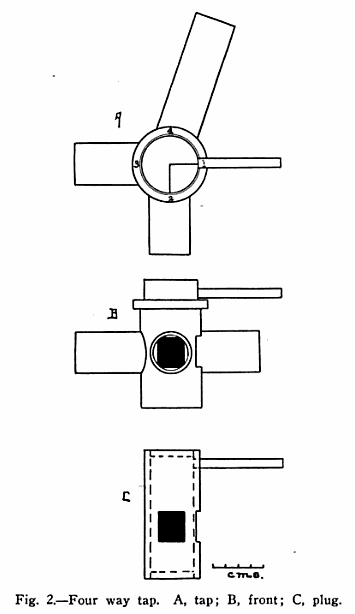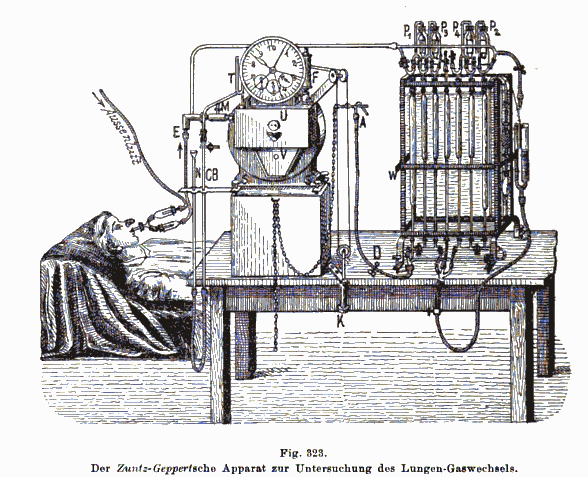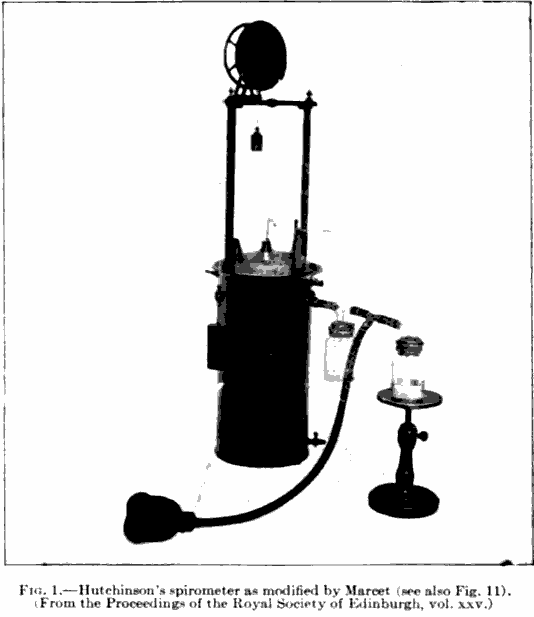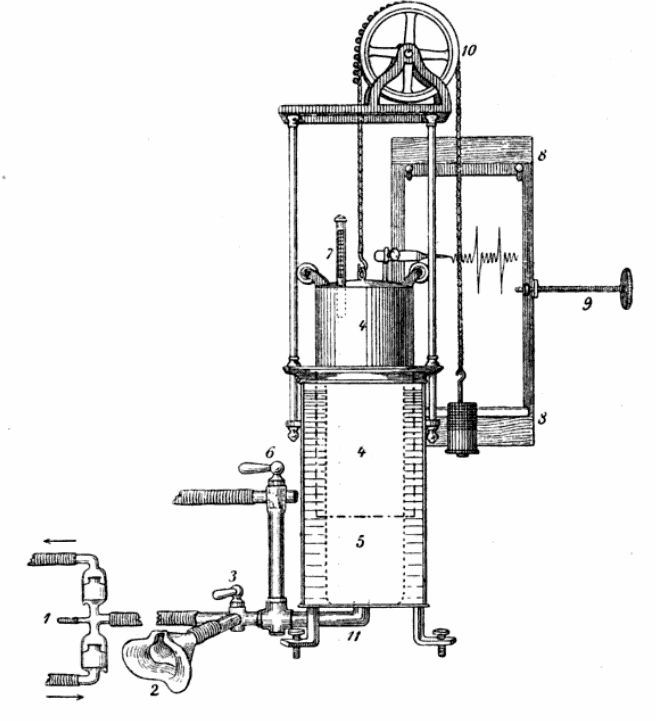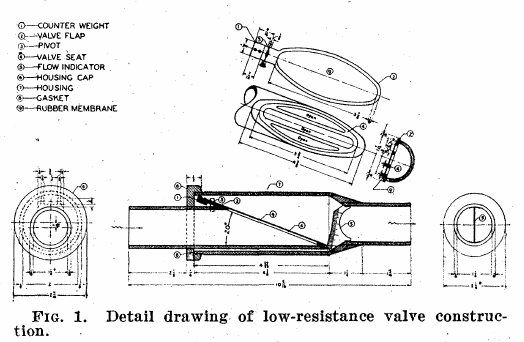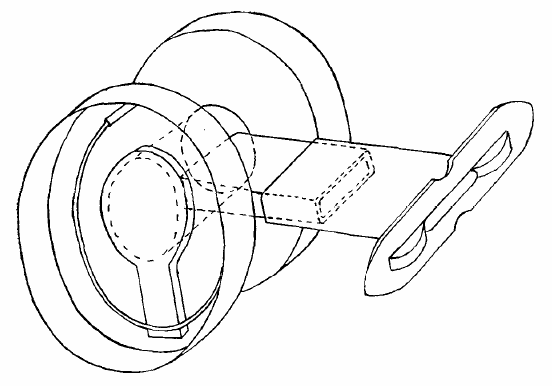Breathing valves available in the USA in 1963. Attrributed to an article authored by Consolazio, Johnson and Pecora. From: page 40 of of a 2003 doctoral dissertion by Yaser Mahfouz Atwa Saad Elgohari.
Category Archives: Valve
Valve, Modified Loven, 1921
Breathing valve, Chavreau’s, 1913
Valve for basal metabolism spirometer, 1922
From: Spirometer measurement of oxygen consumption by the rebreathing method. By Charles Claude Guthrie, Archives of Internal Medicine, Volume 28, 1922, page 843.
“The tap (Fig. 2) serves to connect the spirometer through the absorber with the pump, the subject or the outside air. The rotating portion of the tap is hollow and provided with two openings spaced 90 degrees apart.
“In the first position of the tap, the absorber is shut off and the subject breathes room air. Position two is a quarter turn (clockwise, i.e. to the right) and switches the subject to the absorber and thus to the air in the spirometer, at the same time closeing the opening to the outside. Position three connects the absorber with the pump, and position four connects the pump to the outside air.”
Basal Metabolism measurements, 1910
Spirometer, Marcet Modification, 1909
Spirometer, 1907, with breathing mask and one-way valves
Valve, Low resistance, 1946
From: A low resistance valve and indicating flowmeter for respiratory measurements. By Leslie Silverman and Robert C. Lee. Science 1946; 103: p537.
“It can be noted that the valve flap angle is very low (20 degrees), and thus very little change in direction is necessary in permitting air to pass, once the valve begins to open. The area of the valve flap surface is large, and hence a low pressure will exert enough force to open it. The weight of the valve flap is offset by the counterweight. This counterweight (4 grams) was proportioned to give a low opening pressure and yet allow an adequate amount of of positional movement in the complete valve. The seating surface of the valve is limited to the small longitudinal braces and edges of the seat periphery. In order to reduce the adhesive effect of the rubber membrane when wet, the seating surfaces are dusted with talcum powder. This powder prevents the rubber membrane and Lucite seating surfaces from wetting and also helps preserve the membrane.”
Rosling Valve, 1922
The Rosling valve was originally patented in England prior to World War I and was used in mining and gas masks. This drawing is from Cecil Rosling’s American patent application. The valve had low resistance and unlike many valves of the time, the rubber diaphragms themselves provided the spring action. The Rosling valve was used extensively in physiological research from the 1920’s to the 1950’s.
Mouthpiece and Valve, 1918
From: Yandell Henderson, AND INDIRECT CALORIMETRY VI. THE RESPIRATORY EXCHANGE APPLICATIONS OF GAS ANALYSIS: ARTICLE: J. Biol. Chem. 1918, 33:47-53.
“A form of valve which has proved convenient has recently been devised at the University of Minnesota by professors A.D. Hirschfelder and E.D. Brown. By their kind permission a diagram of two of these valves arranged for inspiration and expiration on a T-tube is shown in Fig. 2. Each valve is made of a large tin salve box with a disk of sheet rubber inside, held in place by a ring spring wire soldered to the box at one point. The crack around the box is made tight with adhesive plaster. In the figure the cover of one valve is removed to show the rubber and wire.”
